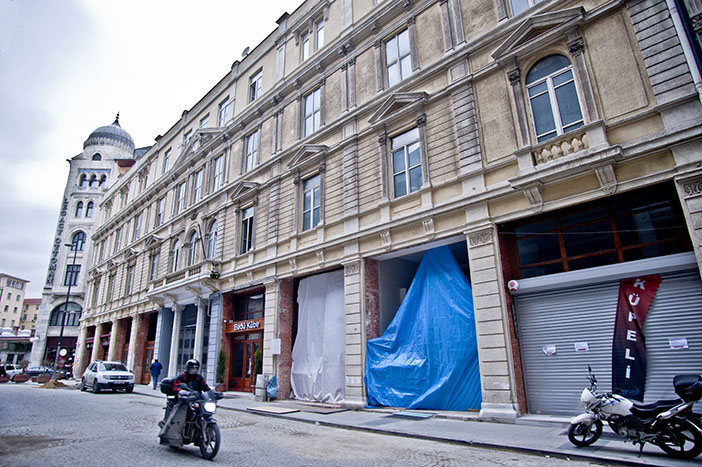The Sanasaryan Inn, one of the oldest Armenian buildings in İstanbul, which was confiscated by the Turkish state in 1930, will be returned to an Armenian foundation 92 years later upon a decision by the Constitutional Court, the T24 news website reported on Wednesday.
Russian-Armenian philanthropist Mkrtich Agha Sanasaryan had the historic inn built in Sirkeci in 1881 to financially support the Sanasaryan School in the eastern province of Erzurum. The building was first seized by the Ottoman and then the Turkish Republic governments and converted into the İstanbul General Security and Police headquarters. It was put under the administration of the Armenian Patriarchate in İstanbul in 1920 before it was confiscated by the Turkish state.
According to a report by the Sözcü daily, the Armenian Patriarchate filed a lawsuit in 2011, asking authorities to return the building. After years of legal battle, Turkey’s Supreme Court of Appeals ruled in 2019 that the deed of Sanasaryan Han would remain with the General Directorate of Foundations.
Following the development, the Sansaryan Foundation filed an individual application with the Constitutional Court, arguing that their right to property had been violated. It added that the foundation was established to meet the educational and training needs of Armenian children and that its sole trustee was the patriarchate.
The court unanimously ruled that the foundation’s right to property, guaranteed in Article 35 of the Constitution, had been violated and sent the decision to the İstanbul 13th Civil Court of First Instance to reverse the original ruling.
While the inn was used as the İstanbul police headquarters, many literary and political figures from left or right-wing ideologies such as poets Nazım Hikmet and Ahmed Arif, writer Aziz Nesin and politicians Mihri Belli and Alparslan Türkeş were interrogated and tortured in the building, which had 36 cells, according to Turkish media reports.

